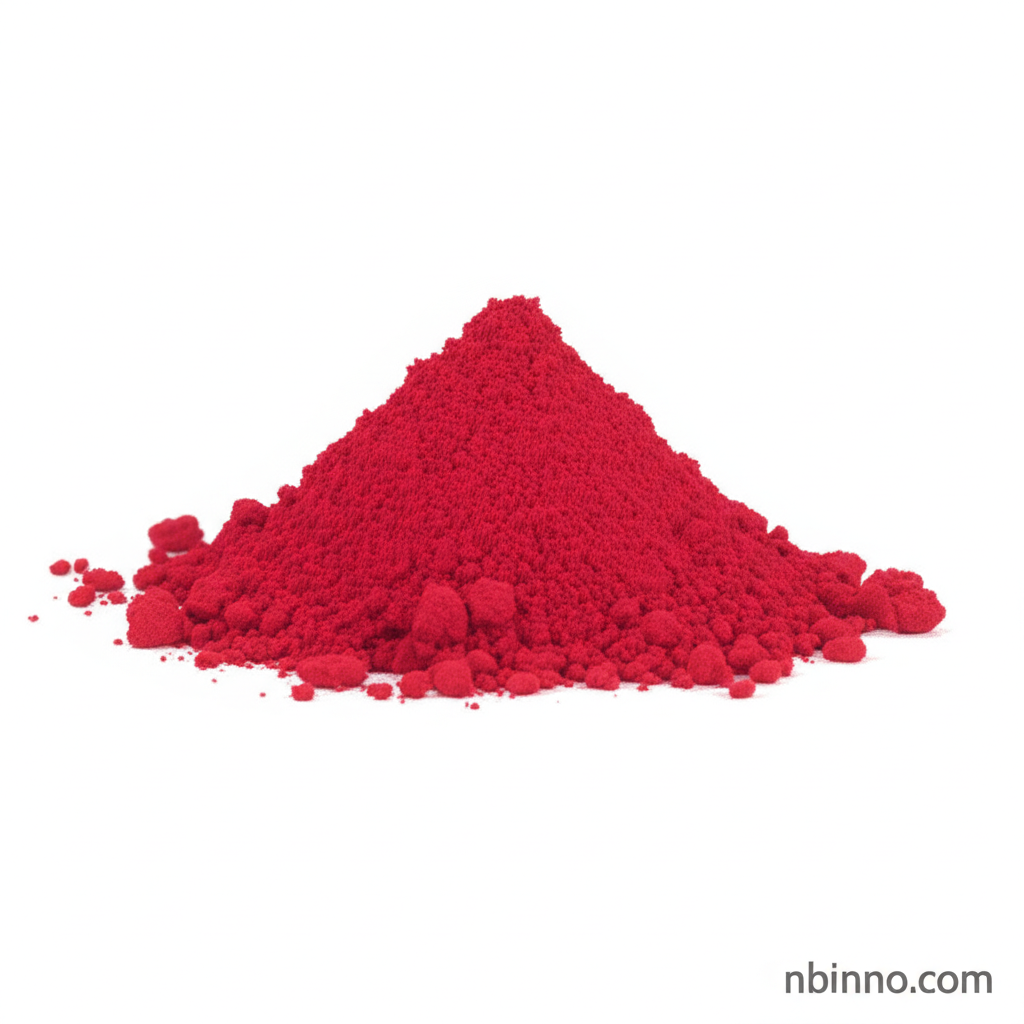Discover Basic Red 51: Your Premier Dye for Synthetic Fibers and Paper
Enhance your textile and paper coloring with our high-quality Basic Red 51 dye.
Get a Quote & SampleProduct Core Value

Basic Red 51
Basic Red 51, identified by CAS 12270-25-6, is a vital component for achieving vibrant and durable coloration across various materials. Its primary function is as a dye for acrylic fibers, offering excellent color fastness and consistency.
- Explore the benefits of using Basic Red 51 dye for acrylic fiber dyeing, ensuring brilliant and lasting hues.
- Understand the application of Basic Red 51 in blended fabric dyeing, providing uniform color penetration.
- Learn how Basic Red 51 enhances the appearance of modified polyester fibers through effective dyeing processes.
- Discover the utility of Basic Red 51 for paper dyeing, contributing to the aesthetic quality of paper products.
Advantages Offered by the Product
Superior Coloration for Synthetics
Achieve superior coloration on acrylic fibers and blended fabrics with Basic Red 51, ensuring deep and consistent shades, a key aspect when considering textile dyeing agents.
Enhanced Material Properties
Improve the visual appeal and performance of modified polyester fibers through the application of Basic Red 51, a crucial factor for specialty polyester colorants.
Cost-Effective Paper Dyeing Solution
Utilize Basic Red 51 for effective paper dyeing, offering a cost-effective solution for achieving desired color depths and uniformity in the paper industry.
Key Applications
Acrylic Fiber Dyeing
Basic Red 51 is extensively used for dyeing acrylic fibers, imparting bright and durable red shades. This is a fundamental aspect of utilizing dyes for synthetic fibers.
Blended Fabric Coloring
The dye is effective in coloring blended fabrics, ensuring even color distribution and enhancing the overall aesthetic of the textiles.
Modified Polyester Treatment
Basic Red 51 is applied to modified polyester fibers, contributing to their visual appeal and meeting specific color requirements in textile manufacturing.
Paper Industry Coloration
In the paper industry, Basic Red 51 is used for dyeing paper products, providing vibrant red hues and improving the visual quality of the paper.
Related Technical Articles & Resources
Why Choose Us?
Leverage our expertise and state-of-the-art infrastructure to accelerate your journey from discovery to commercial success.
Global Experience
With 20 years of R&D, manufacturing, and sales experience, we proudly serve clients across 60 countries and regions worldwide.
Advanced Facilities
Our in-house R&D laboratory, pilot platform, and large-scale production workshop are equipped to meet the audit requirements of global customers.
Seamless Scalability
We facilitate a perfect transition from small-scale lab requirements (grams) to full commercialization (hundreds of tons).
